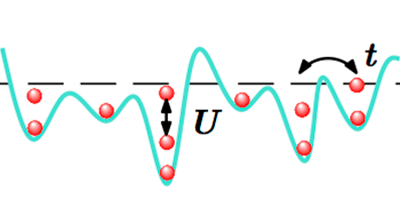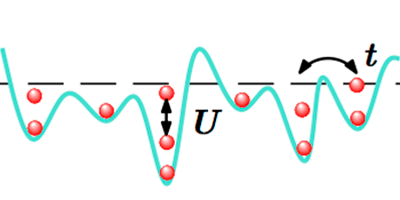Crisis Averted for the Bose Glass
The Bose glass consists of interacting and disordered, or “dirty,” bosons—a system that describes helium- 4 in porous media, cold atoms in disordered optical potentials, disordered magnetic insulators, and thin superconducting films. At zero temperature, and as the degree of disorder is reduced, the Bose glass undergoes a phase transition to a superfluid, but experiments and numerical simulations disagree with the scaling laws of the phase change predicted by theory. Writing in Physical Review Letters, Zhiyuan Yao at the University of Massachusetts, Amherst, and co-workers present new simulations that resolve this discrepancy.
A tenet of statistical physics is the notion of universality: Seemingly dissimilar physical systems—like the orientation of spins in a magnet and the position of atoms in a metal alloy—behave in a “universal” fashion near a continuous phase transition. Near a critical point, the critical temperature Tc follows the scaling relation Tc∝(gc-g)ϕ, where g is a control parameter (such as a magnetic field or the amount of disorder) that drives the phase transition. Any physical system in the universality class of the Bose glass-superfluid phase transition will have the same value for the critical exponent ϕ.
Recent measurements and simulations of the Bose glass to superfluid phase transition found a critical exponent ϕ that disagreed with the expected scaling behavior based on this system’s universality class. To resolve this ‟ ϕ crisis,” Yao and his colleagues performed quantum Monte Carlo simulations on lattices at least ten times larger than previous works. They also adopted a new strategy of using the amount of disorder in the lattice of bosons, instead of the chemical potential, as the control parameter. The team arrived at a precise value of the critical exponent ϕ=2.7(2)—the value expected for this system’s universality class—and showed that previous studies likely underestimated ϕ because they were performed too far from the quantum critical region to observe the true scaling behavior. – Kevin Dusling





